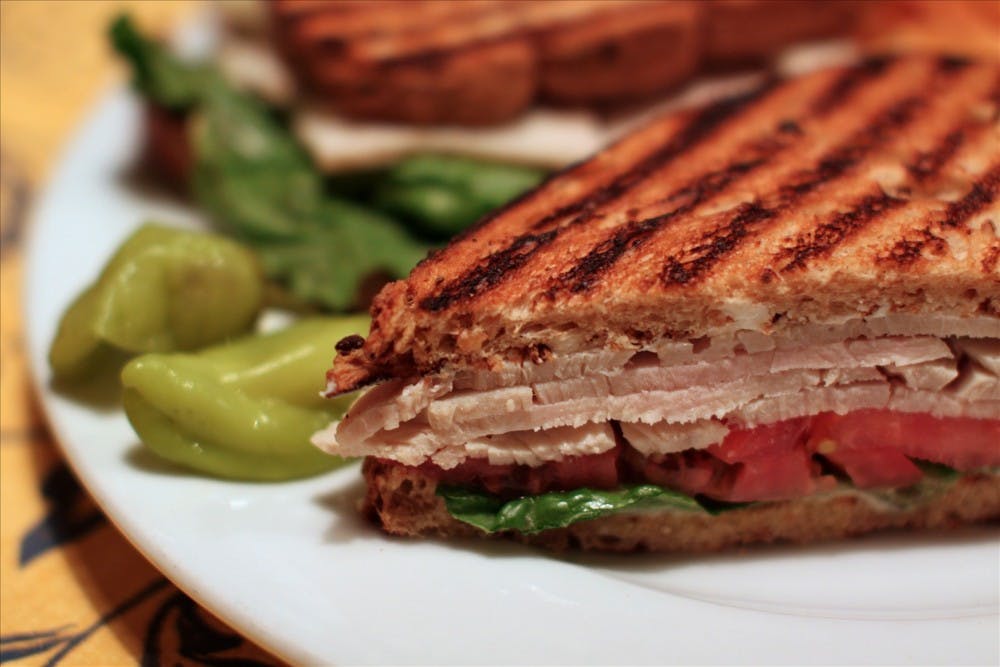Two slices of white Sarah Lee bread. Skippy spread thin on both. Enough strawberry jelly to cover—plus a little extra. The perfect sandwich recipe for a three–year–old. You would never even think to add anything else.
I have probably eaten a million peanut–butter and jelly sandwiches in my lifetime, the majority likely consumed before the age of ten. Now, I never eat them. I’m nothing but a pretentious food snob, stripped of my ability to enjoy simple culinary pleasures. Even the thought of a PB&J without foie gras is enough to make me dry heave. I kid, of course, but my preferences have definitely changed.
It all started with Ina Garten. I started watching the Food Network when I was in third grade, but Barefoot Contessa with my girl Ina was simply a cut above the rest. She taught me that some foods, or even different versions of the same food, can be "better" than others. My mind was blown. What exactly is good vanilla extract? Extra virgin olive oil? Peanut butter? All of a sudden, after being imbued with Ina’s wisdom, my simple Saturday-morning PB&J wasn’t good enough. My bread was far from crusty, and there was no balsamic in my jelly. What was I even doing?
I had no choice but to start experimenting in my own cooking and eating. Since Whole Foods was "better" than my local Publix, I ditched the plastic for paper and ventured off with my mom’s credit card. The fun thing about experiments is that a lot of them fail. In my quest to make the perfect version of chocolate pudding, for example, I misheard the TV and added seven cups of sugar instead of 1.5 (still not sure how that even happened). The result was a syrupy, sickly–sweet sludge that after heating up on the stove, cooled to be completely rock hard. Thank God I used good chocolate, though.
My eating habits changed along with my cooking. I became a comparatively extreme eater, willing to try anything in pursuit of some platonic "better." I tasted the spiciest wings at my local sports bar, sushi for the first time at Whole Foods, and the turkey club replaced the PB&J as number one on my sandwich power rankings. Sure, my tastes were more complex at this point in the story than they were in my infancy. Hell, they were arguably more complex than they are today—but can it be said that they were at all better?
I think about this question a lot honestly. Food could be considered perfectible in the sense that we’re always trying to make it better. It’s a medium, not unlike art, that humans use to express themselves and bring pleasure to others. If this is your goal, then shortcuts are irrational. These pleasures, however, are completely subjective. There is some underlying biological foundation to food preferences—sweet is good, bitter is bad—but overall flavor preferences are too individually different for anyone to speak objectively about food. I’ve traveled, eaten, and experimented enough since my culinary youth to know that "good" depends on who you ask. Ina Garten wasn’t wrong; some olive oils are better than others, just not in all contexts.
Two slices of locally baked ciabatta. Duke’s mayo spread thin on both. Enough blueberry–masala jam to cover—plus a little extra. Turkey, Swiss cheese, and arugula. The perfect sandwich for this twenty–one year old. Sold at Center City deli Middle Child, this sandwich, dubbed "The Surfer," is the embodiment of my food philosophy: Make whatever you think tastes good and share it with people. It’s also, coincidentally, a literal middle ground between the two extremes of adventure with food so far: a turkey club with jelly.

